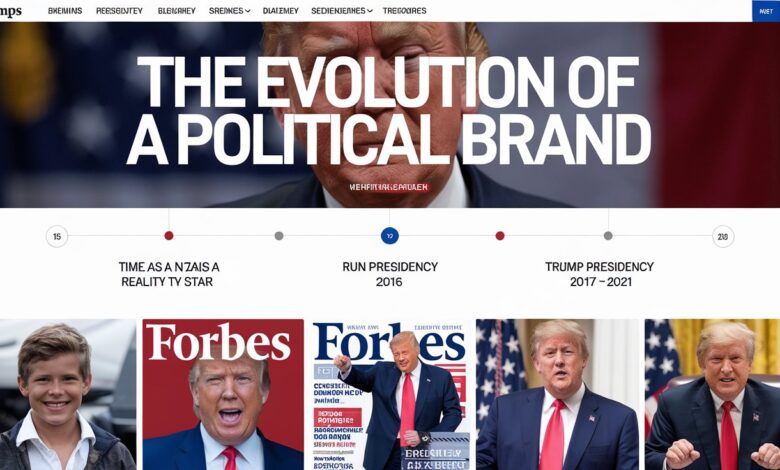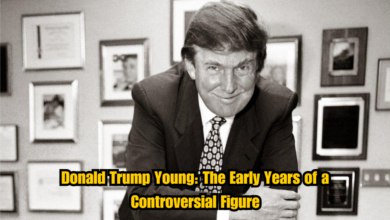Donald Trump Website: The Evolution of a Political Brand

Donald Trump, the 45th President of the United States, has always had a prominent online presence, even before his presidency. However, his website has evolved significantly over the years, reflecting not just his personal brand but also the trajectory of his political career. From being a real estate mogul to a television personality and eventually one of the most polarizing figures in American politics, Trump’s digital domain has become a hub for his supporters and a tool for shaping his public image.
In this article, we’ll explore the current state of Donald Trump’s website, how it has changed over the years, and what it reveals about his ambitions for the future. We’ll also take a closer look at the technical aspects of his site, its content strategy, and its effectiveness as a communication tool in the realm of politics.
Donald Trump’s Website: A Brief History
Pre-Presidential Era
Before venturing into politics, Donald Trump was already a household name, largely due to his real estate empire and television appearances, particularly on The Apprentice. His early websites, such as Trump.com, focused predominantly on promoting his business ventures, including Trump Tower, his hotels, golf courses, and branded merchandise. The tone of these websites was heavily commercial, positioning Trump as a symbol of luxury and success. The branding was clear: Trump equaled wealth and power.
2016 Presidential Campaign
When Donald Trump announced his candidacy for president in 2015, his digital strategy shifted dramatically. The launch of DonaldJTrump.com marked the beginning of a new phase for his online presence. His campaign website became a central part of his communication strategy, disseminating his “Make America Great Again” message to millions of potential voters.
Key elements of the website during this time included:
- Daily updates on campaign events.
- A donation platform that allowed supporters to contribute to his campaign.
- Sections dedicated to Trump’s policy positions, such as immigration, trade, and healthcare.
- A store selling MAGA hats, t-shirts, and other merchandise.
- Links to social media channels where Trump was particularly active, especially Twitter.
One standout feature of Trump’s 2016 website was its user-friendly interface, designed to make it easy for visitors to navigate and find specific information. The website’s SEO strategy was also effective, utilizing targeted keywords related to Trump’s policies and campaign promises, ensuring high visibility on Google search results.
Trump’s Presidency and Website Evolution
Once Donald Trump assumed office, the content of DonaldJTrump.com shifted again. The website was no longer just a campaign tool; it became a platform for promoting the Trump administration’s accomplishments and keeping the public informed about ongoing initiatives.
During this period, the site featured:
- Press releases from the White House.
- Speeches and public statements from Trump and members of his administration.
- Updates on executive orders and policy changes.
- A contact form for citizens to reach out to the administration.
The design of the website remained clean and straightforward, reflecting the no-nonsense, business-like approach Trump had brought to the presidency. However, after leaving office, the site would again undergo significant changes.
Post-Presidency: Donald Trump’s Website in 2024
A New Mission: Preparing for 2024
Following his departure from the White House, Donald Trump’s website took on a new purpose. DonaldJTrump.com now serves as both a legacy platform and a springboard for his potential 2024 presidential run. The site emphasizes Trump’s continued influence on the Republican Party and his enduring support among large segments of the American electorate.
Key features of the 2024 iteration of Donald Trump’s website include:
- A comprehensive timeline of Trump’s accomplishments as president, highlighting key moments like the Tax Cuts and Jobs Act, the Abraham Accords, and the handling of the COVID-19 pandemic.
- News articles and press releases covering Trump’s ongoing involvement in Republican politics, particularly his endorsements of candidates in the 2022 and 2024 elections.
- A donation platform aimed at raising funds for a possible 2024 campaign.
- Merchandise sales featuring the latest “Trump 2024” branding, including hats, t-shirts, and other collectibles.
Content Strategy: Focus on Achievements and Campaigning
A major component of Trump’s post-presidency website is its content strategy, which focuses on highlighting his achievements during his time in office. Each section of the site is designed to remind visitors of Trump’s successes, often juxtaposing them with perceived failures of the current administration. For example:
- A detailed page on economic accomplishments under Trump, featuring statistics about job growth, GDP growth, and stock market performance during his tenure.
- A section dedicated to foreign policy, where the Abraham Accords are prominently featured, alongside Trump’s approach to China and North Korea.
- Frequent updates on immigration policy, with a particular emphasis on Trump’s efforts to build a border wall and reduce illegal immigration.
SEO Strategy: Dominating Google Search Results
Keyword-Rich Content
One of the hallmarks of Donald Trump’s website is its SEO optimization. The site is built around strategically chosen keywords that align with the interests and concerns of Trump’s supporters. Keywords such as “America First,” “border security,” “MAGA,” and “Trump’s accomplishments” are seamlessly integrated into the text, ensuring that the site ranks highly on Google and other search engines.
Additionally, Trump’s site frequently publishes blog posts and news updates related to current events, each optimized with relevant keywords. These posts ensure that Trump’s voice remains at the forefront of political discourse, particularly among his base.
Use of External Links
The site also incorporates external links to credible sources, bolstering its authority in the eyes of search engines. For example, a page discussing Trump’s economic policies may link to reports from the Department of Labor or statistics from the Bureau of Economic Analysis. This not only improves the site’s SEO but also adds a layer of legitimacy to Trump’s claims.
On-Page SEO Best Practices
In addition to keyword optimization and external linking, Trump’s website adheres to several best practices for on-page SEO:
- Meta descriptions for each page, designed to entice users to click through from search results.
- Header tags (H1, H2, H3) used strategically throughout the site to break up content and signal to search engines the structure of the page.
- Alt text for images, particularly those of Trump at rallies or with world leaders, ensuring that the site ranks in image searches as well.
- Mobile optimization – given the increasing number of users accessing websites via mobile devices, Trump’s site is fully optimized for mobile, ensuring a seamless experience across all platforms.
Trump’s Website and Social Media Integration
The Importance of Twitter and Truth Social
One of the key factors that propelled Donald Trump’s rise to political prominence was his adept use of social media, particularly Twitter. While Trump has since been banned from Twitter, his team continues to leverage Truth Social, a platform that Trump himself launched in 2022. His website prominently links to Truth Social and encourages visitors to follow him there for real-time updates.
The integration of social media on Trump’s site serves multiple purposes:
- It ensures that Trump’s messages reach a broader audience.
- It drives traffic to both Truth Social and his website.
- It reinforces the community aspect of Trump’s support base, encouraging users to engage with one another online.
Trump’s ability to connect with his followers through social media is reflected in the design of his website, which prominently features calls to action such as “Follow Trump on Truth Social” and “Join the Movement”.
Trump’s Future Website Plans: 2024 Campaign
Anticipating a 2024 Presidential Run
While Donald Trump has yet to formally announce his candidacy for the 2024 presidential election, his website strongly hints at the possibility. The fundraising efforts, merchandise sales, and endorsement of other Republican candidates all suggest that Trump is preparing for another run at the White House.
As the election approaches, we can expect several changes to Trump’s website:
- A renewed focus on policy positions and campaign promises. Expect detailed sections on border security, economic growth, and foreign policy, all optimized for SEO.
- Enhanced user engagement tools, including interactive features like polls, surveys, and live streaming of campaign events.
- A ramped-up content strategy with frequent blog posts, videos, and articles, all aimed at keeping Trump’s base energized and attracting new supporters.
Conclusion: The Power of Trump’s Digital Strategy
Donald Trump’s website is more than just a collection of web pages; it is a carefully crafted tool designed to enhance his political brand and mobilize his supporters. From its SEO strategy to its social media integration, Trump’s online presence is a reflection of his larger-than-life persona and his continued relevance in American politics.
As we look to the future, it’s clear that DonaldJTrump.com will play a crucial role in shaping the narrative around Trump’s potential 2024 presidential run. With a strategic focus on content optimization, user engagement, and SEO best practices, Trump’s website is well-positioned to remain at the forefront of the digital landscape.
For more information on political websites and SEO strategies, you may explore insights from Search Engine Journal and Moz.




